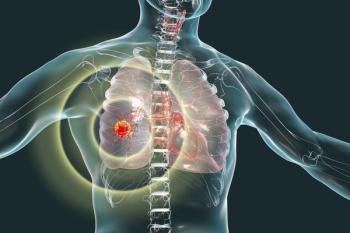
Investigators Identify Independent Predictors of Early Mortality in Newly Diagnosed Multiple Myeloma
A real-world, prospective cohort study identified independent predictors may increase the risk of early mortality in patients with newly diagnosed multiple myeloma.
Among patients with newly diagnosed multiple myeloma, several independent predictors were associated with early death, according to findings from a prospective cohort study published in the British Journal of Haematology.
At 12 months, 9.1% of overall patients died, with 4.5% dying within 6 months. Predictors of early mortality included age (Odds ratio [OR], 1.04; 95% CI, 1.02-1.06; P <.001), ECOG performance status (OR, 1.85; 95% CI, 1.47–2.34; P <.001), serum albumin (OR, 0.93; 95% CI, 0.90–0.96; P <.001), cardiac disease (OR, 3.00; 95% CI, 1.73–5.18; P <.001) and International Staging System (ISS; OR, 1.56; 95% CI, 1.06–2.30; P = 0.03).
“These findings support the need for future research into optimizing treatment delivery to elderly and/or frail patients with [newly diagnosed multiple myeloma] and the ongoing unmet need for more effective and deliverable treatment modalities, particularly in the elderly population,” investigators of the study wrote.
A total of 2377 patients were included in the analysis, with the median age at diagnosis of 67.4 years. Moreover, 60% of patients were male, 31% had an ISS stage of 3, and 60% had 1 or more comorbidities at diagnosis.
Ninety-four percent of patients received initial therapy, with 84% receiving bortezomib (Velcade)-based regimens, although some patients received a lenalidomide (Revlimid)-based regimen. Common regimens included bortezomib, cyclophosphamide, and dexamethasone (71%); lenalidomide and dexamethasone (6%); and bortezomib and dexamethasone (3%). Overall, 51% of patients received an allogeneic stem cell transplant (ASCT) within the first 12 months of diagnosis, and77% of patients aged 70 years or older had ASCT within the first 12 months.
The Kaplan-Meier predictions for mortality rate at 1-year was 8.2% (95% CI, 7.2%-9.3%) and at 6 months it was 4.3% (95% CI, 3.6%-5.2%). The cause of death was available in 89% of cases and secondary cause of death from linkage with death registry was available in 32%. The primary cause of death was disease-related in 78% of cases, infection in 7%, and other causes in 15%. Infection was either a primary or secondary cause of death for 38% of patients.
“We also used the MRDR [Myeloma and Related Diseases Registry] that only collects the primary cause of death and that is classified based on a review of the medical record. The MRDR does not collect frailty assessments, so we could not assess the administration of therapy according to frailty at diagnosis. As this is a 'real-world' study, treatments were determined by local availability and funding of novel agents in [New Zealand and Australia] countries, which may limit the generalizability to some jurisdictions with different access to novel therapies for [newly diagnosed multiple myeloma],” the investigators concluded.
Reference
McQuilten Z, Wellard C, Moore E, et al. Predictors of early mortality in multiple myeloma: Results from the Australian and New Zealand Myeloma and Related Diseases Registry (MRDR). Br J Haematol. Published online July 11, 2022. doi:10.1111/bjh.18324
Newsletter
Stay up to date on recent advances in the multidisciplinary approach to cancer.


















































































